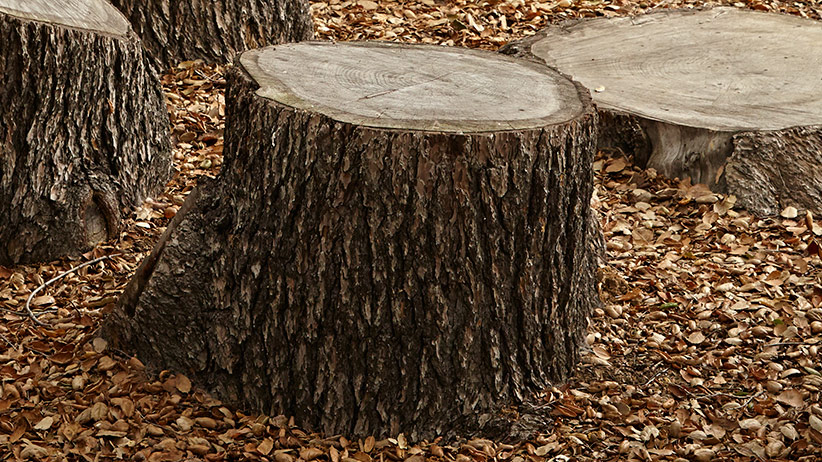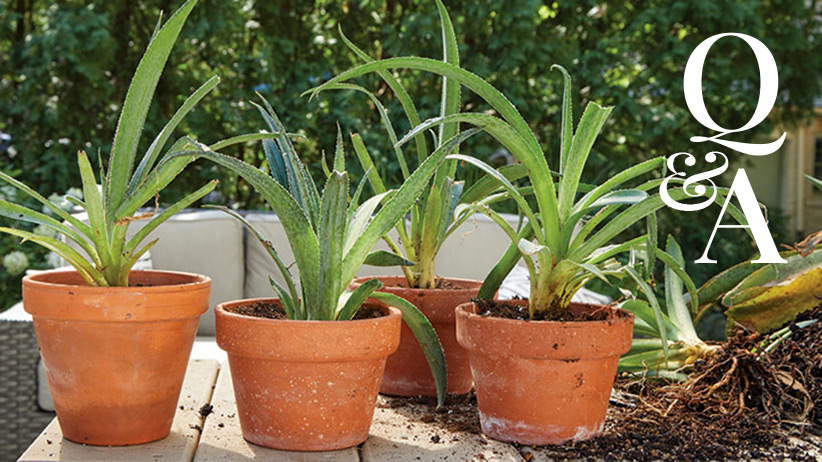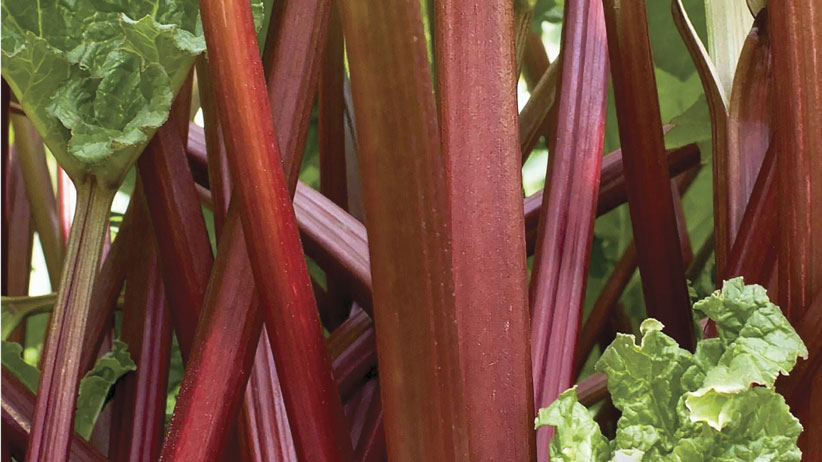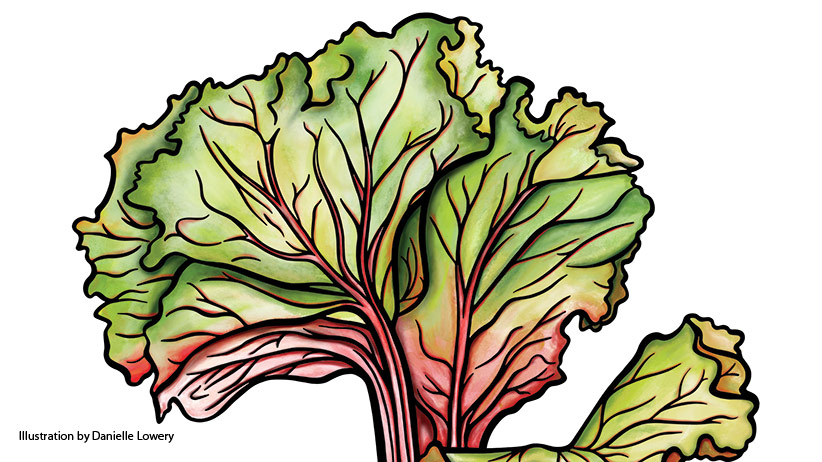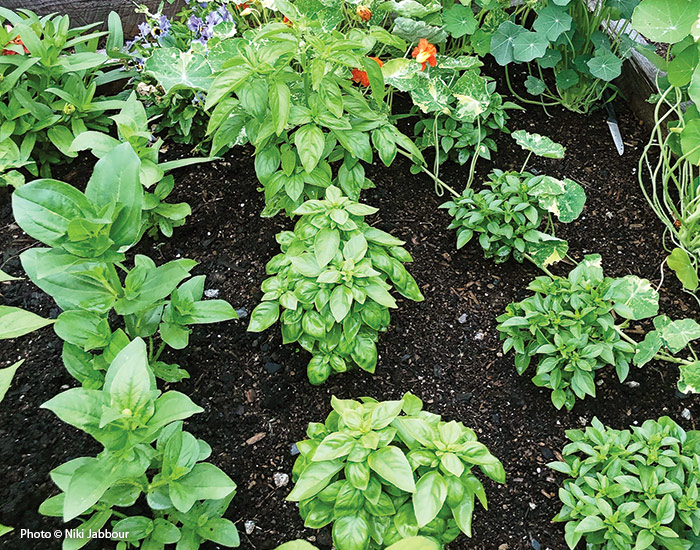
Growing basil
If I could only grow one herb in my garden, it would be basil. Basil is the flavor of summer, lending its spicy-clove essence to pasta, pizza, caprese salad and, of course, pesto. It’s also easy to grow, thriving in sunny garden beds and containers and offering months of aromatic leaves.
I start my own basil seeds indoors in midspring under grow lights, sowing seeds for a handful of varieties. When the weather has warmed and it’s time to tuck those seedlings into my raised beds, I laugh at myself because I usually have at least three dozen basil plants—far too many for one family. But soon, those seedlings begin to grow and I quickly realize there’s no such thing as too much basil. Excess basil is turned into pesto, frozen, dried or shared with friends and family. No one has ever said no to a bouquet of homegrown basil.
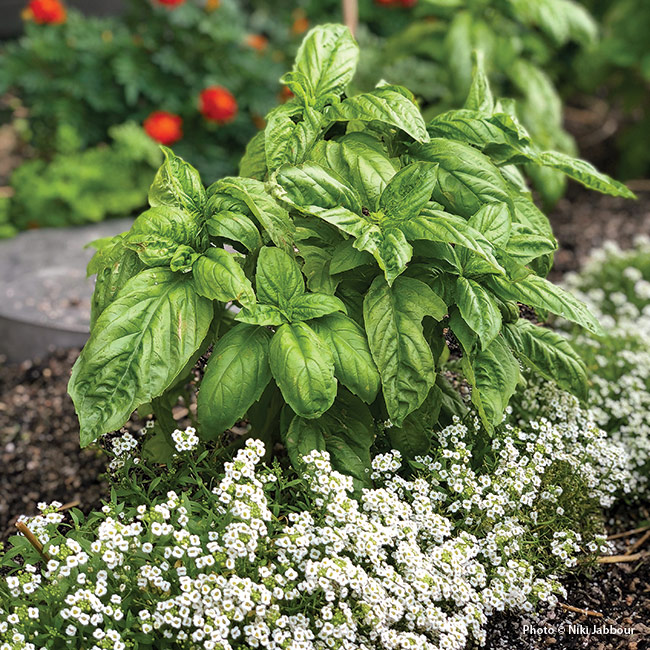
Grow basil in ornamental plantings, too
Basil is also incredibly ornamental and I like to tuck the seedlings in flower gardens, as well as my vegetable beds. It’s the perfect herb for planting almost anywhere, offering a range of plant sizes and forms, as well as varied foliage and flower colors. Varieties of sweet basil have large, glossy green leaves, while Thai basil has striking purple stems and flowers to contrast against the bright green foliage.
You Might Also Like
Growing Herbs in Pots
Helpful Products for Vegetable Gardening
How to Grow Garlic
How to Start a Vegetable Garden
Four tips for growing great basil
1. Wait for warm weather to plant
Basil is a heat-loving herb and shouldn’t be rushed into the garden until the soil and air temperatures have warmed to at least 60 degrees F. Cold temperatures stunt or damage the foliage of frost-sensitive basil, so be patient. I transplant my seedlings into the garden about two weeks after the average last frost date. If temperatures dip to less than 50 degrees F after you’ve planted, cover seedlings with cloches or a length of row cover.
2. Pick the right site for basil in your garden
Find a spot that offers at least six hours of full sun each day and has well-draining soil. Raised beds are ideal. I also dig in a few inches of compost before planting to promote healthy growth. If your garden lacks adequate light or your soil is heavy or clay-based, plant basil seedlings in pots on a sunny deck or patio.
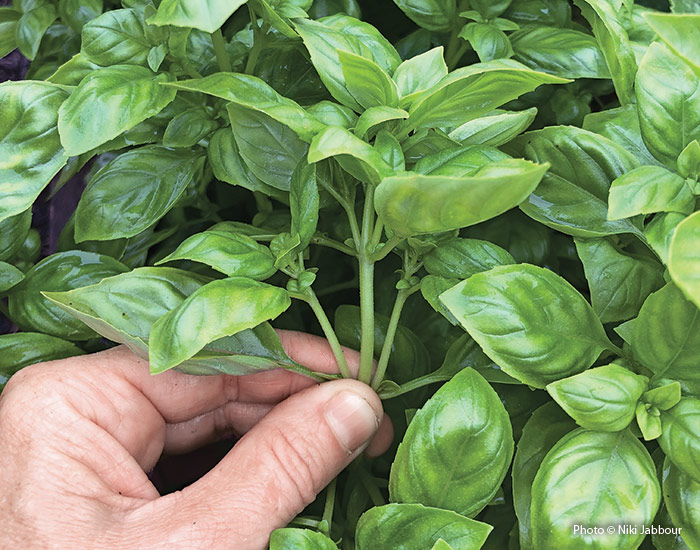
3. Harvest basil often
The first harvest takes place about a month after planting when the young plants are about 10 inches tall and have at least six sets of leaves. Don’t just pluck a few leaves — harvest smart by pinching the main shoots back by about one-third. This encourages side-shoots to grow, resulting in bushier plants and increasing the overall harvest.
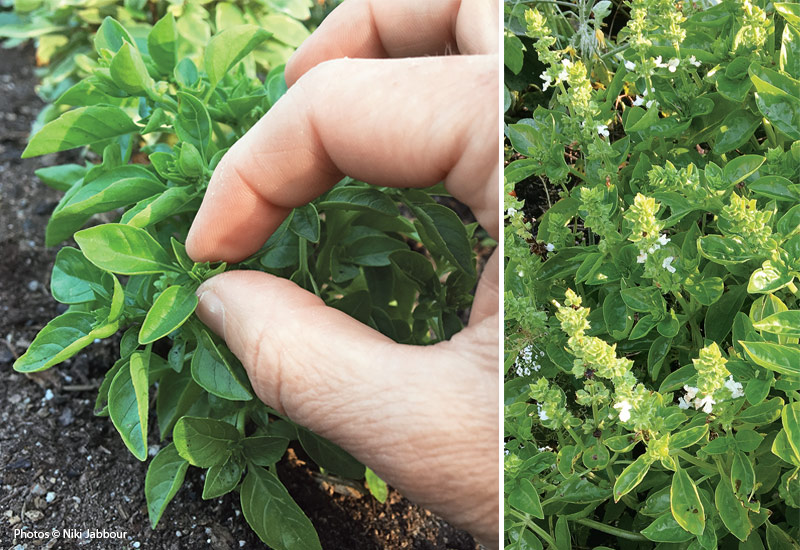
4. Remove the flowers from basil plants
By mid- to late summer, your basil will likely begin to produce flower buds. If basil plants are allowed to flower, the essential oils in the leaves decrease and flavor is reduced. Flowering plants also produce fewer and smaller leaves. Delay flowering by pinching buds as they appear. I also like to succession plant my basil crop by transplanting fresh seedlings into the garden in midsummer. An extra crop of basil planted in mid- to late July ensures a high-quality harvest until frost, especially if you haven’t been keeping up with pinching back the flowers.
Easy ways to preserve basil
Freezing basil
To freeze, chop the leaves roughly in a food processor with a small amount of olive oil. Freeze the mixture in ice cube trays for perfect portions.
Drying basil
To dry basil, cut 6- to 8-inch-long sprigs, gathering them into small bundles. Hang the bundles to dry in a warm room with good ventilation, but out of direct sunlight
You Might Also Like:
Easy Herbs to Grow
Easy Ways to Preserve Your Summer Tomato Harvest
Basil Pesto Pasta Recipe
How to Save Tomato Seeds
Five types of basil you should try
Flip through any seed catalog and you’ll quickly notice there are a lot of different types of basil. Most of us are familiar with sweet basil, but what about Greek, purple, and lemon basils? Do they deserve a place in our gardens and kitchens? Definitely! They offer a wonderful range of flavors beyond that of sweet basil. Here are a few of my favorites:
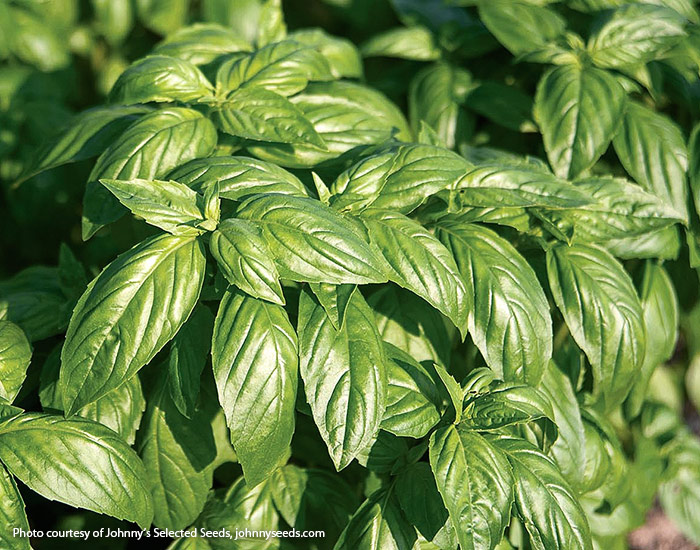
Sweet basil Ocimum basilicum
Sweet, or Genovese, basil is the classic culinary basil that lends a spicy clove flavor to pastas, pesto and countless other dishes. Plants typically grow 18 to 30 inches tall and have cup-shaped oval leaves.
-
Prospera® sweet basil (in photo)
This newly introduced basil grows up to 2 feet tall and offers a generous harvest of 3-inch-long flavor-packed leaves. It’s also the first certified organic variety that offers genetic resistance to downy mildew, a pathogen that affects the foliage of basil plants, severely reducing yield.
-
Everleaf™ sweet basil
Everleaf has become my go-to sweet basil variety for its high productivity and bolt resistance. It grows just 20 to 24 inches tall but because of the short stems between each leaf node, it yields a larger-thanaverage amount of leaves.
-
‘Dolce Fresca’ sweet basil
Ideal for garden beds or containers, this award-winning sweet basil variety is extremely compact, growing just 14 inches tall. The densely branched plants yield a good harvest of sweet-spicy leaves from late spring to the first fall frost.
-
‘Napolitano’ sweet basil
Also called “mammoth leaf” or “lettuce leaf” basil, this type of sweet basil produces leaves as large as your hand! Plants grow up to 30 inches tall with massive crinkly leaves 4 to 6 inches in length. The flavor is also super-sized, and more intensely spiced than most types of sweet basil.
You Might Also Like:
How to Avoid Basil Downy Mildew
How to Make Herb-Infused Oils from Your Garden
How to Harden Off New Plants

Purple basil Ocimum basilicum var. purpurascens
Purple basil is a unique type of sweet basil with purple-bronze leaves and a strong spicy flavor. Use it the same ways that you’d use traditional sweet basil.
-
‘Red Rubin’ purple basil (in photo)
Popular for its high yield and great flavor, this 18- to 24-inch-tall All-America Selections winner boasts deep purple-burgundy leaves that offer a spicy kick to pasta and salads.
-
‘Purple Ruffles’ purple basil
16- to 20-inch-tall ‘Purple Ruffles’ has vivid purple foliage that is deeply ruffled, making it a striking addition to mixed containers.
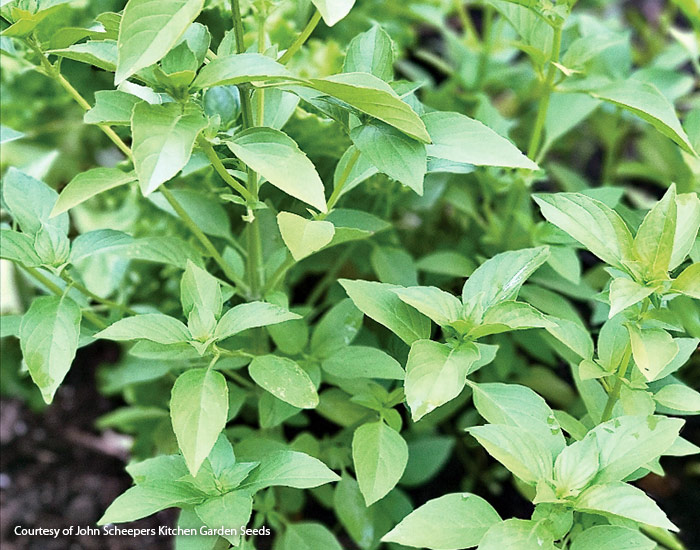
Lemon basil Ocimum basilicum var. citriodorum
I grow a lot of herbs for tea, and varieties of lemon basil like ‘Mrs. Burns’ and ‘Sweet Dani’ have a robust citrus flavor that makes an aromatic tea. Lemon basil can also be chopped and added to vinaigrettes, marinades, salads and cold drinks.
-
‘Sweet Dani’ lemon basil
An All-America Selections winning basil, ‘Sweet Dani’ has large, bright green leaves infused with an intense lemon scent and flavor. The well-branched plants grow up to 2 feet tall and when clipped regularly, pump out plenty of fresh growth until frost.
-
‘Mrs. Burns’ lemon basil
This popular heirloom variety grows up to 2 feet tall and has large leaves and delicate white flowers. The mouth-watering flavor pairs classic basil with a bright citrus infusion.

Greek basil Ocimum basilicum var. minimum
The compact, rounded form of Greek basil is extremely ornamental, adding formality to gardens and containers. I like to use it as an edible edge and plant it along the perimeter of my raised beds. Sprinkle the tiny leaves over pasta, bruschetta and pizza or turn it into a flavorful pesto.
-
‘Aristotle’ Greek basil (photo)
My latest basil obsession is ‘Aristotle’ due to its high disease resistance, extra-tiny leaves, and tight, rounded form. It only grows 8 to 10 inches tall, so it looks fantastic in a container or windowbox and is relatively bolt resistant, flowering later in the summer than other varieties.
-
‘Spicy Globe’ Greek basil
‘Spicy Globe’ is one of the more common varieties of Greek or little leaf basil and forms tidy, 10-inch-tall-and-wide balls of aromatic leaves.
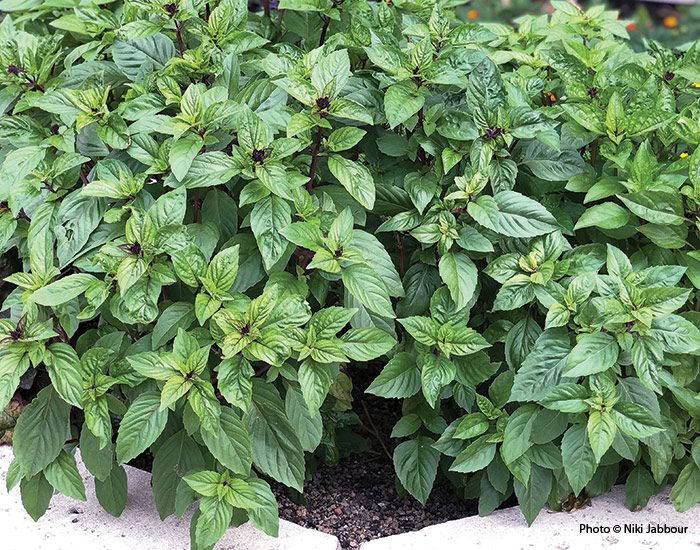
Thai basil Ocimum basilicum var. thyrsiflora
Thai basil isn’t the basil to grow if you want to make pesto, but it’s essential for adding an intense licorice clove flavor to soups, stir-fries and salads. It’s also visually striking, with narrow, bright green leaves and deep purple stems and buds. Plus the buds and flowers are edible and can be used like the leaves or as a garnish.
-
‘Siam Queen’ Thai basil
The award-winning ‘Siam Queen’ has set the standard for Thai basil. It forms vigorous plants that grow 2 feet tall and wide, and are extremely bolt-resistant, only flowering as summer begins to wind down.








